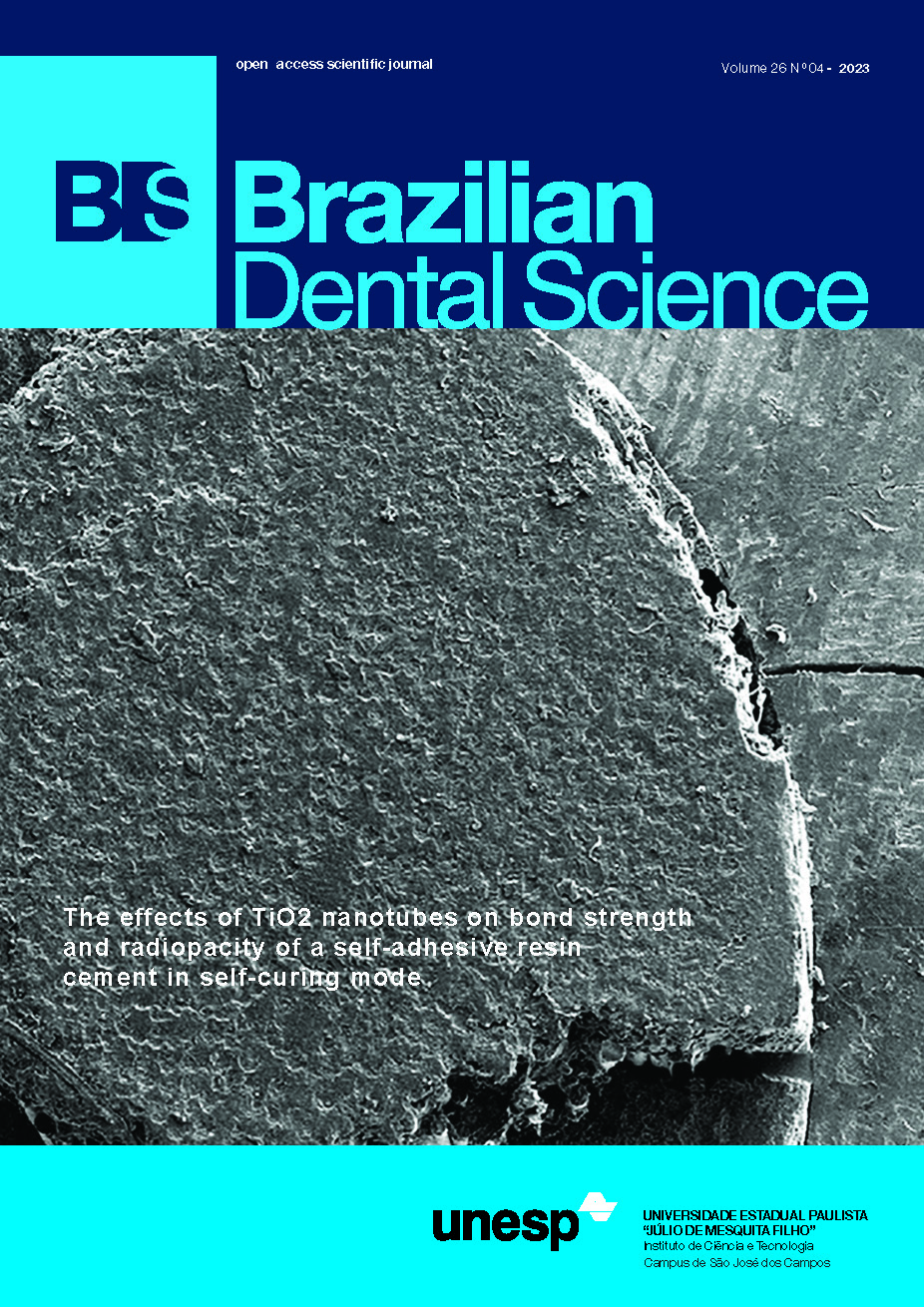The effects of TiO2 nanotubes on bond strength and radiopacity of a self-adhesive resin cement in self-curing mode
DOI:
https://doi.org/10.4322/bds.2023.e3909Resumo
Objective: The aim of this in vitro study was to analyze the influence of the titanium dioxide nanotubes in a self-cure mode polymerization of a dual resin luting agent through push out bond strength and radiopacity tests. Material and Methods: After mixed with a commercial dual self-adhesive resin cement, three concentrations of titanium dioxide nanotubes (0.3, 0.6, and 0.9% by weight) were analyzed in self-curing mode. The bond strength to bovine root dentin and fiberglass posts was assessed with the push out bond strength test and was evaluated in three thirds (cervical, middle and apical) (n=10), followed by failure mode analysis (SEM), and the ISO standard 9917-2 was followed for radiopacity test (n=10). Data were statistically analyzed by one-way ANOVA test, followed by Tukey’s test (alpha=0.05). Results: Reinforced self-adhesive resin cement with 0.6% titanium dioxide nanotubes showed significant difference compared to the control group for push out test (p=0.00158). The modified groups did not show significant difference among thirds (p=0.782). Radiopacity showed higher value for group with 0.9% titanium dioxide nanotubes in comparison with control group (p<0.001). Conclusion: The addition of titanium dioxide nanotubes to a self-adhesive resin cement increased the bond strength to dentin and radiopacity values in the self-cure polymerization mode.
KEYWORDS
Bond strength; Dental cements; Fiber post; Nanotubes; Radiopacity; Titanium.
Downloads
Downloads
Publicado
Como Citar
Edição
Seção
Licença
TRANSFERÊNCIA DE DIREITOS AUTORAIS E DECLARAÇÃO DE RESPONSABILIDADE
Toda a propriedade de direitos autorais do artigo "____________________________________________________________________" é transferido do autor(es) para a CIÊNCIA ODONTOLÓGICA BRASILEIRA, no caso do trabalho ser publicado. O artigo não foi publicado em outro lugar e não foi submetido simultaneamente para publicação em outra revista.
Vimos por meio deste, atestar que trabalho é original e não apresenta dados manipulados, fraude ou plágio. Fizemos contribuição científica significativa para o estudo e estamos cientes dos dados apresentados e de acordo com a versão final do artigo. Assumimos total responsabilidade pelos aspectos éticos do estudo.
Este texto deve ser impresso e assinado por todos os autores. A versão digitalizada deverá ser apresentada como arquivo suplementar durante o processo de submissão.




























